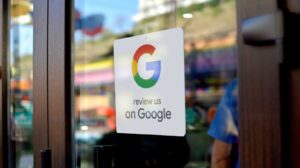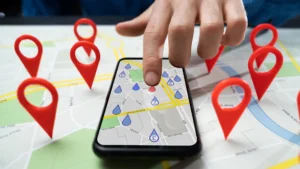
As an interior designer, creating a visually stunning and functional website is crucial for showcasing your work and attracting potential clients. However, simply having a website is not enough – you need to ensure that it’s optimized for search engines to increase your online visibility and drive more organic traffic. This is where on-page SEO comes into play.
On-page SEO refers to the practice of optimizing various elements on your website’s pages to improve their relevance and user experience, ultimately boosting your search engine rankings. By following best practices for on-page optimization, you can make it easier for search engines like Google to understand the content and purpose of your interior design website, leading to higher rankings and more qualified leads.
At our “SEO agency in Chicago” and “website design company in Chicago,” we understand the importance of on-page SEO for interior design businesses. In this blog post, we’ll provide a comprehensive on-page SEO checklist to help you optimize your website and improve its search engine performance.
Keyword Research and Targeting : Checklist for Interior Design Businesses
The foundation of any successful on-page SEO strategy is keyword research. Identifying the keywords and phrases your target audience is using to search for interior design services is crucial for optimizing your website’s content and ensuring its relevance.
Start by brainstorming a list of relevant keywords related to your services, such as “interior designer Chicago,” “luxury home design,” or “modern living room ideas.” Then, use tools like Google Keyword Planner, SEMrush, or Ahrefs to analyze the search volume, competition, and potential for each keyword.
Once you’ve identified your target keywords, strategically incorporate them throughout your website’s content, including page titles, headings, body text, meta descriptions, and image alt text. However, be cautious of keyword stuffing, as overusing keywords can harm your rankings and provide a poor user experience.
Title Tags and Meta Descriptions : Checklist for Interior Design Businesses
Title tags and meta descriptions are crucial on-page elements that influence how your website’s pages appear in search engine results. An optimized title tag should accurately describe the page’s content while including your target keyword, ideally at the beginning. For example, “Modern Interior Design Services | Interior Designer Chicago.”
Meta descriptions, while not a direct ranking factor, can impact click-through rates from search results. Craft compelling, keyword-rich meta descriptions that entice users to click through to your website.

Headings and Content Structure : Checklist for Interior Design Businesses
Organize your website’s content using a logical hierarchy of headings (H1, H2, H3, etc.). The H1 heading should be the main title of the page, while subsequent headings should break down the content into relevant sections and subsections.
Incorporate your target keywords into these headings where appropriate, but remember to prioritize readability and user experience over keyword stuffing.
Image Optimization : Checklist for Interior Design Businesses
High-quality visuals are essential for showcasing your interior design work and engaging visitors. However, unoptimized images can significantly slow down your website’s load times, negatively impacting user experience and search engine rankings.
Optimize your images by compressing file sizes without sacrificing quality, using descriptive filenames that include relevant keywords, and providing concise yet informative alt text. Alt text not only improves accessibility for visually impaired users but also helps search engines understand the context and relevance of your images.
Internal Linking : Checklist for Interior Design Businesses
Internal linking is the practice of linking to other relevant pages within your website. This not only improves navigation and user experience but also helps search engines understand the hierarchy and relationship between different pages on your site.
Link to relevant interior design services, project galleries, or blog posts from your main pages using descriptive anchor text that includes relevant keywords. This can help distribute link equity throughout your website and improve the overall visibility of your interior design content.

Mobile Optimization : Checklist for Interior Design Businesses
With an increasing number of users accessing the internet via mobile devices, having a mobile-friendly website is no longer optional – it’s a necessity. Google prioritizes mobile-friendly websites in its search rankings, so ensuring your interior design website is optimized for mobile devices is crucial for on-page SEO success.
Implement a responsive design that automatically adjusts to different screen sizes, ensuring a seamless user experience across devices. Additionally, optimize for factors like page load speed, easy navigation, and touch-friendly elements to enhance the mobile experience for your visitors.
Page Speed Optimization : Checklist for Interior Design Businesses
Page load speed is a critical factor in both user experience and search engine rankings. Slow-loading pages can lead to higher bounce rates and lower engagement, negatively impacting your search visibility.
To optimize page speed, consider techniques like:
- Compressing images and files
- Minifying HTML, CSS, and JavaScript
- Leveraging browser caching
- Optimizing server response times
- Enabling compression (e.g., Gzip)
Tools like Google’s PageSpeed Insights and WebPageTest can help you identify and address potential performance bottlenecks on your website.
Schema Markup and Structured Data : Checklist for Interior Design Businesses
Schema markup and structured data help search engines better understand the content and context of your web pages. By incorporating structured data markup (such as Schema.org), you can enhance your website’s search appearance and provide rich information to users, potentially increasing click-through rates.
For interior design websites, relevant structured data types may include LocalBusiness, Product, and ImageObject markup, among others. Implementing structured data can be complex, so consider consulting with an experienced “SEO agency in New York” or “website design company in Chicago” for guidance.
Duplicate Content and Canonicalization : Checklist for Interior Design Businesses
Duplicate content can confuse search engines and potentially dilute the authority and rankings of your interior design website. To avoid this issue, ensure that each page on your website has unique, high-quality content.
If you have multiple versions of a page (e.g., www.example.com and example.com), use canonical tags to specify the preferred version for search engines to index. This can help consolidate link equity and avoid potential duplicate content penalties.
XML Sitemaps and Robots.txt : Checklist for Interior Design Businesses
An XML sitemap is a file that provides search engines with a comprehensive list of all the pages on your website, making it easier for them to discover and crawl your content effectively.
Additionally, a robots.txt file allows you to control which areas of your website search engines can access and index. This can be particularly useful for excluding development or administrative sections of your site from being crawled and indexed.
By implementing these on-page SEO best practices, you can improve the visibility and search engine performance of your interior design website, ultimately attracting more qualified leads and growing your business. However, it’s important to note that on-page optimization is just one aspect of a comprehensive SEO strategy – off-page factors like link building and content marketing also play crucial roles in achieving long-term success.
If you require assistance with optimizing your interior design website or developing a comprehensive SEO strategy, consider partnering with a reputable “SEO agency in Chicago” or “website design company in Chicago” like ours. Our team of experts can help ensure that your website is fully optimized for search engines, enabling you to capture more organic traffic and potential clients in the competitive world of interior design.
FAQs
- How much does it cost to build a website for my business?
- The cost of building a website varies depending on factors such as complexity, features, and design preferences. While DIY website builders offer affordable options, hiring a professional web developer can ensure a customized solution tailored to your business needs.
- How long does it take to see results from a website?
- The timeline for seeing results from a website depends on various factors, including the competitiveness of your industry, the quality of your website and content, and your marketing efforts. Generally, businesses can expect to see improvements in visibility and engagement within a few months of launching their website.
- Can I update my website myself, or do I need technical skills?
- Many website builders offer user-friendly tools and templates that allow businesses to update their website content without any coding knowledge. However, for more complex changes or customization, hiring a web developer may be necessary.
- How can I improve my website’s search engine ranking?
- Improving your website’s search engine ranking involves various strategies, including keyword optimization, creating high-quality content, earning backlinks from authoritative websites, and ensuring a mobile-responsive design. Regularly monitoring and optimizing your website based on analytics data is also essential for maintaining and improving your search visibility.
- Is it necessary to have a mobile-responsive website?
- Yes, having a mobile-responsive website is essential in today’s mobile-first world. With an increasing number of users accessing the internet via mobile devices, a mobile-friendly design ensures a seamless user experience and helps improve your website’s search engine ranking.
- How can I protect my website and customer data from security threats?
- Implementing robust security measures such as SSL encryption, firewall protection, and regular security audits can help protect your website and customer data from security threats. Additionally, educating your employees about cybersecurity best practices and staying informed about the latest threats and vulnerabilities is essential for maintaining a secure online presence.
Cyber Munk and Benefits of Website for Businesses Integration:
- Introduction: As Cyber Munk experts, we understand the pivotal role that websites play in enhancing the benefits of website for businesses.
- Increased Visibility: Reaching New Audiences: Utilizing Cyber Munk strategies can amplify the benefits of website for businesses, ensuring maximum visibility and exposure to potential customers.
- Enhanced Credibility and Trust: With Cyber Munk techniques, businesses can bolster their credibility and trustworthiness, further leveraging the benefits of website for businesses.
- 24/7 Accessibility: Convenience for Customers: Cyber Munk solutions ensure seamless accessibility round-the-clock, enhancing the benefits of website for businesses by catering to customers’ needs anytime, anywhere.
- Cost-Effectiveness: Maximizing ROI: By harnessing Cyber Munk methodologies, businesses can optimize their online presence, maximizing the benefits of website for businesses while minimizing costs.
- Competitive Advantage: Standing Out in the Crowd: Cyber Munk strategies empower businesses to gain a competitive edge, capitalizing on the benefits of website for businesses to differentiate themselves in the market.
- Marketing and Branding: Building a Strong Presence: Through strategic Cyber Munk initiatives, businesses can elevate their marketing and branding efforts, amplifying the benefits of website for businesses to create a formidable online presence.
- Customer Engagement: Fostering Relationships: Cyber Munk tactics facilitate meaningful customer engagements, enriching the benefits of website for businesses by nurturing lasting relationships with customers.
- Sales and Revenue: Driving Growth: With Cyber Munk optimization, businesses can drive sales and revenue growth, maximizing the benefits of website for businesses as a potent sales channel.
- Analytics and Insights: Data-Driven Decision Making: Leveraging Cyber Munk analytics provides invaluable insights, empowering businesses to make data-driven decisions that enhance the benefits of website for businesses and drive continuous improvement.
Conclusion: Unlocking the Full Potential with Cyber Munk Integration
By integrating Cyber Munk strategies, businesses can unlock the full potential of their websites, amplifying the benefits of website for businesses and positioning themselves for sustained growth and success in the digital landscape.




